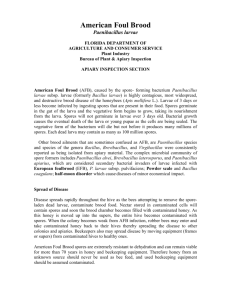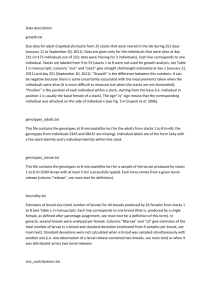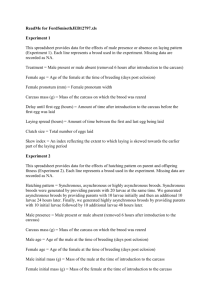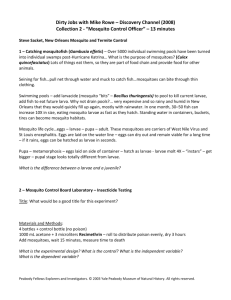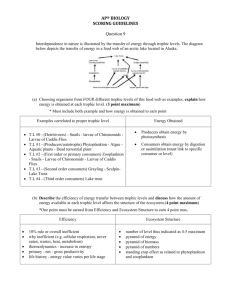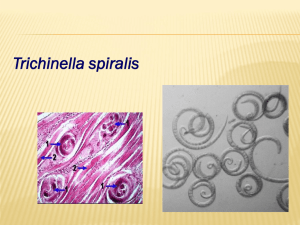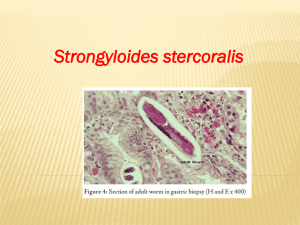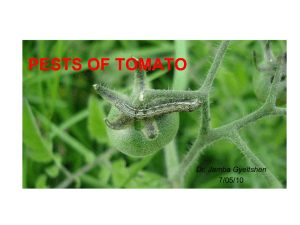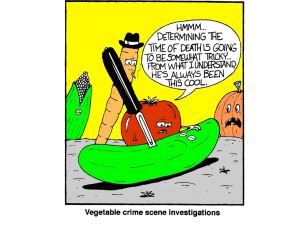README.
advertisement
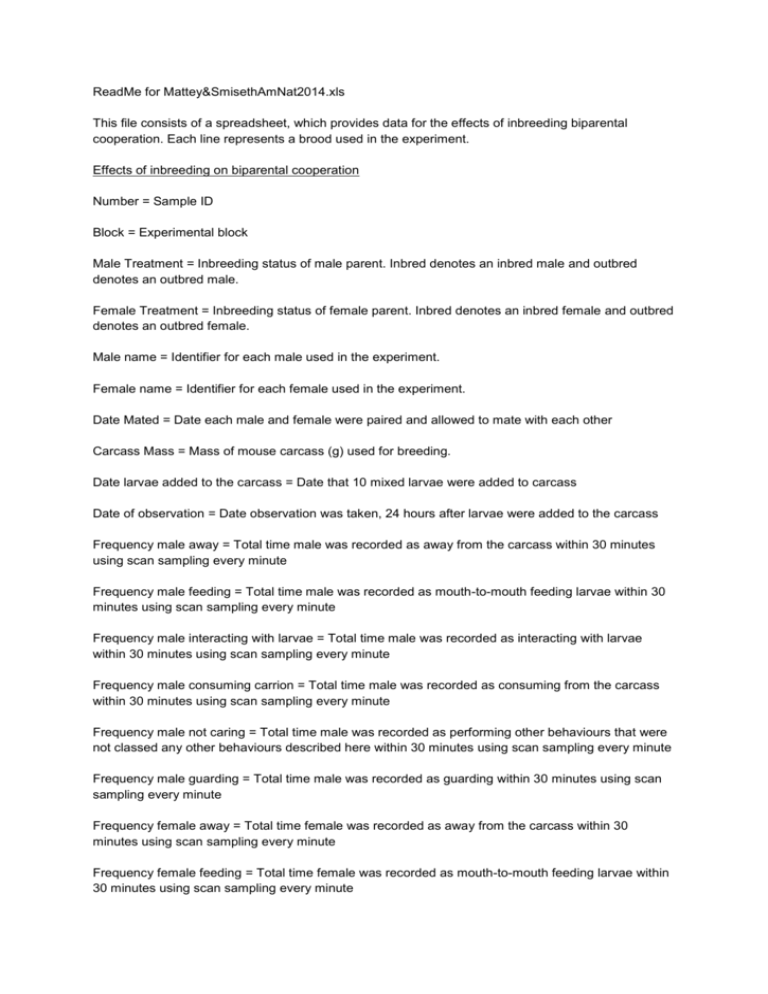
ReadMe for Mattey&SmisethAmNat2014.xls This file consists of a spreadsheet, which provides data for the effects of inbreeding biparental cooperation. Each line represents a brood used in the experiment. Effects of inbreeding on biparental cooperation Number = Sample ID Block = Experimental block Male Treatment = Inbreeding status of male parent. Inbred denotes an inbred male and outbred denotes an outbred male. Female Treatment = Inbreeding status of female parent. Inbred denotes an inbred female and outbred denotes an outbred female. Male name = Identifier for each male used in the experiment. Female name = Identifier for each female used in the experiment. Date Mated = Date each male and female were paired and allowed to mate with each other Carcass Mass = Mass of mouse carcass (g) used for breeding. Date larvae added to the carcass = Date that 10 mixed larvae were added to carcass Date of observation = Date observation was taken, 24 hours after larvae were added to the carcass Frequency male away = Total time male was recorded as away from the carcass within 30 minutes using scan sampling every minute Frequency male feeding = Total time male was recorded as mouth-to-mouth feeding larvae within 30 minutes using scan sampling every minute Frequency male interacting with larvae = Total time male was recorded as interacting with larvae within 30 minutes using scan sampling every minute Frequency male consuming carrion = Total time male was recorded as consuming from the carcass within 30 minutes using scan sampling every minute Frequency male not caring = Total time male was recorded as performing other behaviours that were not classed any other behaviours described here within 30 minutes using scan sampling every minute Frequency male guarding = Total time male was recorded as guarding within 30 minutes using scan sampling every minute Frequency female away = Total time female was recorded as away from the carcass within 30 minutes using scan sampling every minute Frequency female feeding = Total time female was recorded as mouth-to-mouth feeding larvae within 30 minutes using scan sampling every minute Frequency female interacting with larvae = Total time female was recorded as interacting with larvae within 30 minutes using scan sampling every minute Frequency female consuming carrion = Total time female was recorded as consuming from the carcass within 30 minutes using scan sampling every minute Frequency female not caring = Total time female was recorded as performing other behaviours that were not classed any other behaviours described here within 30 minutes using scan sampling every minute Frequency female guarding = Total time female was recorded as guarding within 30 minutes using scan sampling every minute Total mass of hatching larvae (g) = Mass of brood after hatching, before being added to the carcass (g) Mean hatching larval mass (g) = Mass of each larva after hatching, before being added to the carcass, calculated by dividing the total mass of hatching larvae by the brood size of 10 (g). No.larvae at observation = Number of larvae that were alive at the time of observation Total brood mass of brood at observation (g) = Mass of brood immediately after the observation (g) Mean mass of larvae at observation = Mass of each larva immediately after the observation, calculated by dividing the total brood mass at observation by the No. larvae at observation (g). No. larvae dispersing = Number of larvae that were alive at the dispersal stage Total mass of dispersing brood (g) = Mass of brood at the dispersal stage (g) Mean mass of dispersing larvae (g) = Mass of each larva at the dispersal stage, calculated by dividing the total mass of dispersing brood by no. larvae dispersing (g). Number of larvae eclosed = Number of larvae alive at stage of eclosion.


